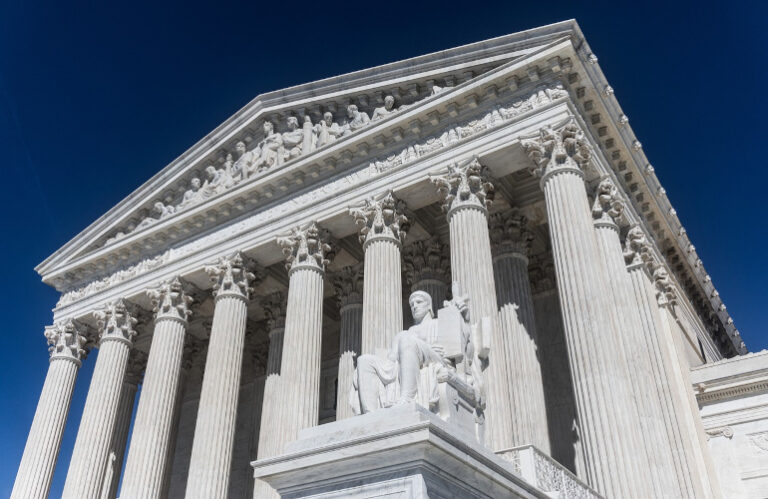This summer, the U.S. Supreme Court overturned a 40-year-old precedent that said those with expertise in federal agencies should interpret ambiguous laws passed by Congress. By 6-3 votes, Runner Bright Enterprises against Raimondo reversed the decision Chevron USA vs. Natural Resources Defense Council, a 1984 case known as the “Chevron Doctrine.” Runner Clear now allows federal district court judges to use their own judgment instead of the subject matter experts at federal agencies.
 Overturning the Chevron Doctrine, a longstanding goal of the fossil fuel industry and anti-regulation advocates, will likely lead to challenges to many older laws under the sway of the Environmental Protection Agency. Rules limiting greenhouse gas emissions and pollution from fossil fuel power plants could be revised, now that agencies like the EPA no longer have automatic deference.
Overturning the Chevron Doctrine, a longstanding goal of the fossil fuel industry and anti-regulation advocates, will likely lead to challenges to many older laws under the sway of the Environmental Protection Agency. Rules limiting greenhouse gas emissions and pollution from fossil fuel power plants could be revised, now that agencies like the EPA no longer have automatic deference.
Renewable energy advocates are wondering whether aspects of the Inflation Reduction Act will be revisited soon, but as with any Supreme Court ruling, it’s “clear as mud,” said Matt Petroski, a partner at the accounting firm. Armanino.
“The Runner Clear This case did not mean that everything ever written is now null and void. It’s just a different lens,” he said. “It kind of takes the thumb off the scale of this sheer deference to a government agency. That doesn’t mean there won’t be respect for the government agency. It does not mean that the courts will automatically resolve every conflict.
“I think it changes a lot, but maybe it doesn’t change anything,” Petroski continued.
Because the IRA is a tax assessment, entities are less likely to successfully take aspects to court, says Keith Martin, partner at law firm Norton Rose Fulbright.
“It’s very difficult for anyone to file a policy case against the IRS or the Treasury Department over a statute,” he said. “[Loper Bright]The biggest impact of the policy is likely to be on environmental regulations, because most climate change-related regulations were passed after major environmental laws of the 1970s through the 1990s, and those laws were not written with climate change in mind, but government is trying to adapt. them to today’s world.”
Eli Hinckley, partner at law firm Baker Bottsagreed that some of the more ambiguous laws regarding EPA regulations could be brought up again, but the IRA is written in much clearer language.
“[Loper Bright] specifically addresses the question of an agency providing rulemaking or rulemaking where there is some ambiguity and there is no congressional authority to make those rules,” he said. “Most of the rules created by the IRA are all very specific: ‘The Treasury Department will establish the appropriate rules to eliminate these rules.’”
Hinckley noted one part of the IRA that could warrant an overhaul: the new clean hydrogen production tax credit (45V). The industry is still searching for clean hydrogen, and the Treasury Department’s dollar-per-kilogram tax offer could later be found to be an inadequate comparison. By means of Runner Clear, a court could instead decide how 45V would be interpreted.
“With the 45V clean hydrogen credit, people can argue that there’s an overreach of the agency’s vision of what those rules should be,” Hinckley said. “But I think in broad terms [Loper Bright] gives people the opportunity to turn to the court, rather than the agency, to solve the problem.”
Petroski also said the newness of the IRA and renewable energy calculations in general could lead to legal arguments as Chevron is toppled.
“When I first started getting into it [the IRA]my head started to spin. I’m a tax professional, so I’m used to reading the code, I’m used to reading the regulations. But it’s super technical in green energy, understanding kilowatts and how that all breaks down,” he said. “There are some definitions that require some knowledge of a unit of measure. If the Ministry of Finance uses a definition from the EPA or another expert within the government in its regulations, [certain groups] can go after it, so [Loper Bright] could open that up. That does not mean that we will end up in a different place.”
The biggest effect Runner Clear Hinckley said this will have an impact on the renewable energy sector. This is just the uncertainty of it all.
“There will be some challenges, and one of the things that is concerning is that people in investing don’t like uncertainty,” he said. “When you face challenges that look like they’re going to disrupt the way some of these rules work, when you don’t have a clear line of sight or a safe haven — money isn’t going to work until you have certainty.”


